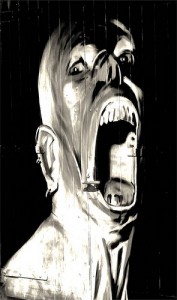Anyone who’s experienced chronic pain knows it can be a very mysterious issue. Chronic pain presents very different characteristics and patterns when compared to acute pain such as a skinned knee or a sprained joint. It may start for no clear reason and progress with no clear pattern. A long-ago healed injury may continue to hurt even though the tissue is no longer damaged. Oddly enough even amputees and paraplegics may experience pain emanating from missing or non-working limbs. Chronic pain seems as if it’s driven by a very mysterious force.
The issue of hope–or hopelessness–can be a truly crushing burden in the quest to resolve long-term pain. Typical methods in addressing chronic pain may include drugs (ibuprofin, steroid shots, muscle relaxers), heat, ice, physical therapy, chiropractic adjustments, massage (Active Release Therapy, myofascial release, Rolfing, and others) and acupuncture, and then if none of the above works then we often resort to what certainly must be the final sure cure: surgery. These methods often provide temporary relief at best.
This past weekend I attended the first half of the Z-Health R-Phase certification. Pain and resolving pain was the overarching theme. I learned a tremendous amount about the issue. As many people have observed, pain doesn’t always equal an injury. Pain sometimes feels better with movement: someone with a slightly sore shoulder may feel better as he or she moves the arm around. In contrast, pain often does indicate an injury. If I break my leg and I continue to walk, then the pain will increase with every step.
A key issue we discussed is that the site of pain is rarely the site of the problem. Pain is often a symptom of dysfunction elsewhere in the body (Or sometimes even outside the body. More on that in a moment.) For instance, absent a blow or violent twist of the knee, knee pain is rarely a knee problem. Knee pain is often rooted in hip or foot dysfunction. Similarly, shoulder pain is often rooted in poor spine or hand movement. As the renowned neurologist Karel Lewitt said, “He who treats the site of pain is lost.”
Emotions are often overlooked when we deal with pain. Again we often think of pain as strictly a bodily thing. Still a lot of us have noticed that our pain increases during times of stress. This is an indication that we must consider our mind and our emotions when we’re trying to resolve long-term pain. It may be that our “physical” pain is rooted in the conditions that surround us. In fact what happens in many cases is that the pain itself causes us such distress that it becomes a self-perpetuating situation in which our fear of pain drives only more pain. It’s an enormously complex matter when we start to look inside our head in order to address pain; but if we’re not considering the inside of our skull then we’re probably missing the mark by a long shot.
One of the books Z-Health creator Eric Cobb suggested we read is David Butler’s Explain Pain. Butler is an Australian neurologist who specializes in pain research and treatment. His blog on pain is called Explain Pain. If you’re currently in pain or if you’re in the business of treating pain I highly suggest you look into it. Pain treatment professionals should also look into the Neuro Orthopedic Institute. The NOI site describes their mission as such:
“The nervous system is our prime focus, integrating neuroscience, neurodynamics and manual therapy into patient management. NOI’s core philosophy is to provide progressive, current material, always challenging existing management protocols, to promote professional reinvestment, and to ensure that course participants benefit from the most recent research in a fun way.”

